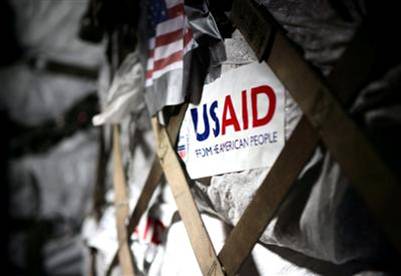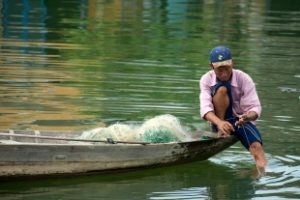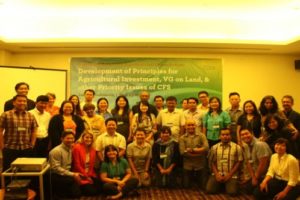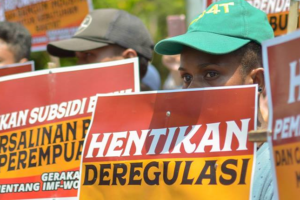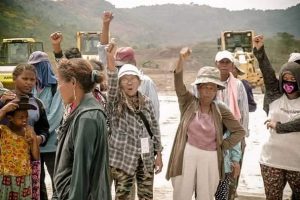[[{“type”:”media”,”view_mode”:”media_large”,”fid”:”1573″,”attributes”:{“alt”:””,”class”:”media-image”,”height”:”276″,”style”:”width: 350px; height: 241px; margin: 10px; float: right;”,”typeof”:”foaf:Image”,”width”:”401″}}]]IBON International Statement
On 24 October 2016, US Department of State assistant secretary Daniel Russel denied that aid from the US came with “strings attached,” calling such claim as “factually wrong.”[1]
IBON International contends that US policy and practice disprove Russel’s denial of aid conditionality. The US Agency for International Development’s (USAID) policy framework is explicitly tied to US interests. One of the key documents outlining this US policy in fact begins: “International development cooperation is a key component of American power, along with diplomacy and defense.”[2]
There are, incidentally, influential conservative voices in the US currently advocating in prominent fora for an even greater role for USAID in defense.[3] However, military matters aside, foreign private interests are served as well. This occurs in part through targeted Public-Private Partnership (PPP) infrastructure projects that prioritize key areas in the Philippine economy, such as tourism.[4]
USAID exerts a high degree of agenda-setting influence over the Philippine policymaking process, in part through technical assistance, which includes what some have called “soft conditionalities.”[5] Two of its projects—COMPETE ($22.5 million) and TRADE ($12.8)—are already greater in value than the 2016 budget for the National Economic and Development Authority (NEDA), which amounted to ₱1.286 billion or $27.7 million.
The fact that PPPs figure so strongly in its prescriptions should also be cause for alarm since there is scarcely any unambiguous evidence for the efficacy of PPPs in achieving positive development outcomes, and much evidence to the contrary.[6] USAID’s unwavering confidence, in fact, seems to have helped pave the way for former president Noynoy Aquino’s signing of the controversial PPP Act, which constitutes a comprehensive privatization program. Among other features, its alternative dispute resolution system removes the right of Filipino citizens to file temporary restraining orders against PPP projects even in cases where they might bring with them serious threats to their communities.[7]
For example, recent USAID PPP promotion activities include the Laguna-Lakeshore Expressway-Dike project, which, had it moved beyond the bidding phase, would have been (with a budget of $2.73 billion) the largest PPP project undertaken during the Aquino administration.[8] The project reportedly entails the eviction of tens of thousands of families[9] and this displacement has already been underway.[10] The rush to complete the project, moreover, resulted in systematically ignoring serious ecological and safety hazards despite concerted attempts by scientists and community organizations to bring this to the government’s attention.[11] [12]
It is clear that, though some local elites stand to reap substantial benefits from USAID’s PPP promotion, average Filipino citizens for the most part suffer significant losses.
Photo courtesy of US Army Africa is licensed under Creative Commons BY 2.0
[1] Anthony Q. Esguerra (2016), “Russel: ‘Strings attached’ in US aid to PH ‘factually wrong’,” Inquirer.net, 24 October, http://globalnation.inquirer.net/147717/daniel-russel-strings-attached-in-us-aid-to-ph-factually-wrong-perfecto-yasay-us#ixzz4O5BaQPCa, accessed 25 October 2016.
[2] USAID (2011), USAID Policy Framework 2011‒2015 (Washington, DC: USAID), p. 1., http://usaidprojectstarter.org/content/cdcs-country-development-cooperation-strategy, accessed 24 Jun. 2016.
[3] Max Boot and Michael Miklaucic, “Reconfiguring USAID for State-Building,” Policy Innovation Memorandum, Council on Foreign Relations, http://www.cfr.org/foreign-aid/reconfiguring-usaid-state-building/p37869, accessed 25 Oct. 2016.
[4] Information about USAID COMPETE’s tourism-focused projects can be found in USAID (2013), Advancing Philippine
(cont. of references)
Competitiveness (COMPETE) Project: Year 1 Annual Report, (Washington, DC: USAID), https://dec.usaid.gov/dec/GetDoc.axd?ctID=ODVhZjk4NWQtM2YyMi00YjRmLTkxNjktZTcxMjM2NDBmY2Uy&pID=NTYw&attchmnt=VHJ1ZQ==&rID=MzU0OTE3, accessed 16 Jun. 2016.
[5] For a discussion of this, see Reality of Aid Coordinating Committee (2016), “Undermining Democratic Country Ownership: Embedding northern development agendas through technical cooperation,” in Reality of Aid 2016 Report, (Quezon City: IBON International), http://www.realityofaid.org/wp-content/uploads/2016/10/Abridged-ROA-Report-2016.pdf, accessed 25 Oct. 2016.
[6] Jomo KS, Anis Chowdhury, Krishnan Sharma and Daniel Platz (2016), “Public-Private Partnerships and the 2030 Agenda for Sustainable Development: Fit for Purpose?” DESA Working Paper (New York: UN), https://sustainabledevelopment.un.org/content/documents/2288desaworkingpaper148.pdf, accessed 5 Jun. 2016.
[7] For a more detailed analysis of this and the contingent liabilities fund, see the section “Less regulation, more burden” in IBON (2015), “PPP Act: Surrender to corporate interests,” IBON Facts & Figures (Quezon City, Philippines: IBON), 15 Jun., pp. 6‒9.
[8] USAID (2014), ibid., p. 9.
[9] Dennis Espada (2014), “Residents spur resistance to road dike, reclamation plans,” Bulatlat, 7 Nov., http://bulatlat.com/main/2014/11/07/residents-spur-resistance-to-road-dike-reclamation-plans/, accessed 28 Jun. 2016.
[10] Asian Human Rights Commission (2015), “PHILIPPINES: Stop demolition against Laguna Lakeshore community in Taguig,” 8 May, Hunger Alerts, http://www.humanrights.asia/news/hunger-alerts/AHRC-HAU-002-2015, accessed 29 Jun. 2016.
[11] Evelyn Macairan (2016), “Church to campaign vs Laguna Lakeshore,” The Philippine Star, 31 Mar., http://beta.philstar.com/nation/2016/03/31/1568046/church-campaign-vs-laguna-lakeshore, accessed 5 Jun. 2016.
[12] Kelvin S. Rodolfo (2016), “The dangerous Laguna Lakeshore Expressway Dike,” Rappler, 24 Jan., http://www.rappler.com/science-nature/ideas/120068-dangerous-laguna-lakeshore-expressway-dike, accessed 5 Jul. 2016.
